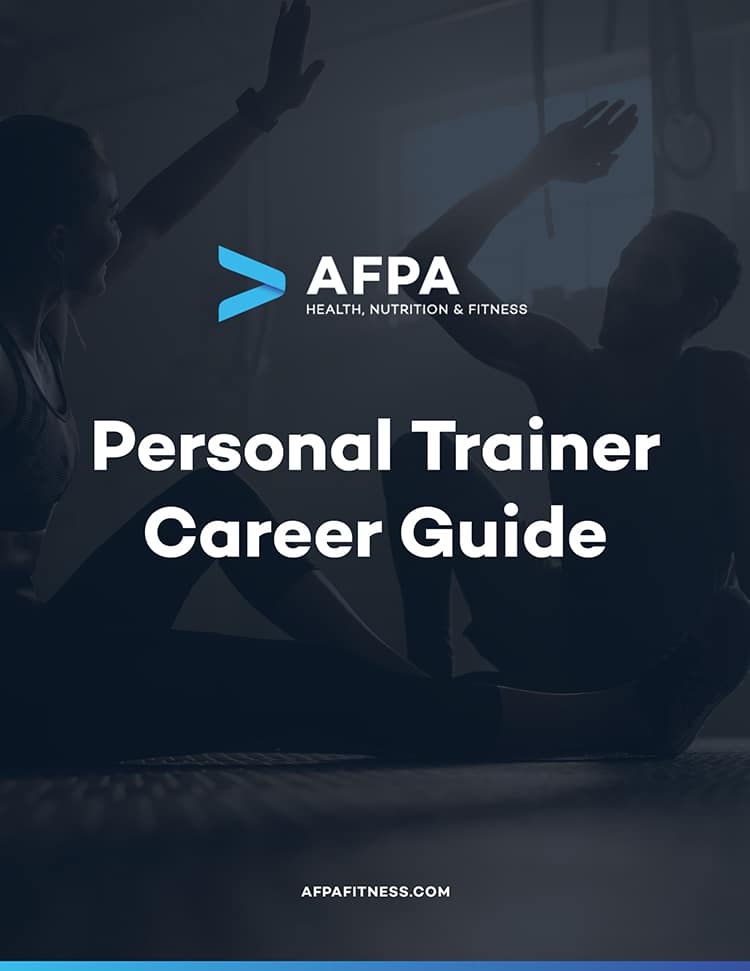Client injury. Also synonymous with the word “nightmare” when you’re a certified personal trainer, especially when the said injury is sustained as a direct result of your training program.
A hurt client may find it difficult to continue training.
Worse still, they’re also likely to lose confidence in your abilities to deliver results safely—the perfect recipe for declining client motivation and engagement levels. This begs the question, “Is it possible to prevent client injuries from happening in the first place?” Thankfully, yes.
To help you keep your clients injury-free and happy, here are ten tips to keep in mind when designing any client’s routine.
Learn How to Become a Certified Personal Trainer Online in Less Than 6 Months

Take Your Pre-Exercise Assessment into Account
Reference your findings from the pre-exercise assessment.
By giving you a clear picture of your client’s current fitness capabilities (cardiovascular or muscular), they’re vital in helping you identify appropriate starting points for workout programming.
For instance, programming back squats right away for clients with limited ankle mobility is a definite no-no.
Your client is likely to compensate for inadequate ankle mobility by rounding the back and the pelvis—significantly increasing the stress placed on the lower back—in an attempt to reach “proper” depth. And that raises the risk of an injury significantly.
Instead, focus on improving your client’s ankle mobility with exercises like the front-foot elevated split squats and the weighted goblet squats.
So, go through every result gleaned from your pre-exercise assessment—and address them accordingly when crafting a client’s routine.
Start Slow
Stacking training sessions too close together hurts your client’s recovery. And that can not only lead to decreased athletic performance but can also result in serious injuries.
Even if a client can physically adapt to the increased physiological demands right away, doing too much, too soon, can be mentally overwhelming.
Giddy with the excitement of signing up for personal training, they may have failed to consider how they’d cope when real-life happens (e.g., when work gets busy, social obligations with friends and family).
That’s why it always pays off to prioritize consistency—instead of training frequency—when planning a client’s routine.
More Isn’t Always Better
Programming a client’s routine such that they’re always left hobbling down the stairs doesn’t mean that you’ve given them a great workout. It just means you’ve gone far beyond their current, appropriate limitations—and left them at a high risk of injury.
That’s why it’s essential to consider the “minimal effective dose” of training when designing any client’s routine.
To ensure that you’re on the right track, regularly check in with your client on how they’re coping with each of the planned exercises and weights. One of the most popular ways to make this assessment is by using the Rating of Perceived Exertion (RPE).
Make Time for Proper Warm-up Periods
By increasing blood flow to working muscles, enhancing muscular activation in preparation for the upcoming workout, and improving range of motion, it’s now exceedingly clear that making time for a warm-up is key to injury prevention.
Bonus: Having your clients warm-up right before their workouts can also improve their performance, ensuring quicker progress to their fitness goals, whatever they may be.
Teach Movement Patterns with Suitable Exercise Regressions
Even with the most well-intentioned training cues, your client can sometimes fail to “get” the proper execution of an exercise.
For example, one of the most common problems clients have is struggling to understand the difference between a squat and a hinge—which often results in them either “squatting up” a deadlift or hinging their way down to the bottom of a squat.
Both are equally dangerous scenarios.
So, whenever necessary, you’ll want to brainstorm suitable exercise regressions that’ll familiarize your client with the basic movement pattern—and help them build the strength and coordination needed in the targeted muscle groups.
Here are a few examples:
- Barbell back squats: Split squats, bodyweight squats, goblet squats
- Barbell bent-over row: One-arm dumbbell rows, cable rows, smith-machine bent-over rows
- Barbell deadlifts: Cable pull-throughs, trap bar deadlifts, kettlebell swings
Incorporate Paused and Tempo Reps
A client’s movement pattern on a lift might look great overall—but there could still be a chance that they’re doing something wrong. This is especially true for technical lifts like the bench press, squat, and deadlift, where a lot is going on.
It might thus be a wise idea to implement paused and tempo reps in their routine. Here’s how they help:
- Paused reps: Getting your client to pause at a movement point encourages proper positioning and strengthens that part of the lift. This is particularly useful if your client has a weakness at a particular stage of the movement.
- Tempo reps: Having your client slow down their movement forces them to maintain control over their target muscles instead of simply relying on momentum and “bouncing out” of a lift’s bottom position. This improves your client’s proprioception over time.
Target and Develop All Muscle Groups Evenly
One of the most important things you can do when designing a safe fitness routine is to target all muscle groups evenly.
Many women, for example, prefer to focus on their glutes and hamstrings.
But this one-sided focus on the posterior chain sets them up for injuries. Since the quads are responsible for keeping the kneecap stable and in place, weak quads significantly increase the risk of patellar tracking disorder.
This principle applies to all muscle groups; that’s why you need to develop their physique in a well-rounded manner.
Provide Adequate Rest Periods
When excessive fatigue sets in, a client’s form can start to break down—and that’s associated with a high risk of injury.
Thus, to design a safe fitness routine, you’ll have to incorporate adequate rest periods.
Just how long should a client’s rest period be, though? It appears to depend on the type of exercise your client is performing.
A good starting point would be roughly two minutes for single-joint exercises (e.g., bicep curls and chest flies) and three minutes for heavy, compound lifts (e.g., barbell back squats and deadlifts).
And remember that whenever possible, longer rest is always preferred, as the client is likely to perform better (e.g., more volume).
Understand That the Routine Goes Beyond 1:1 Sessions
Your client only spends a few hours a week with you. What they do in their daily lives for the rest of the hours (and the week) will matter a lot more.
Let’s say your client has poor thoracic mobility because they’re stuck behind a desk from 9 to 5 on workdays.
There’s likely only so much improvement your client can experience with the mobility work they’re doing in those few hours with you. That’s why you’ll also have to plan for a fitness routine that addresses their day-to-day “habits.”
For a client that struggles with thoracic mobility, lifestyle adjustments you can suggest include:
- Taking frequent work breaks and
- Sitting on a stability ball instead of a chair.
Implement “Light Sessions”
Deload sessions—when appropriately planned—can help give your client’s body and mind a break from hard training. Reducing the workout’s overall demands on your client every so often can ease joint and ligament strain, along with the risk of injury and burnout.
Of course, deload weeks won’t make sense for every client.
The ones who’ll benefit the most are those who’ve trained hard for several weeks and months with progressive overloading. So, be sure to use your judgment.
Main Takeaways
The truth is that making careful assessments—and being meticulous about program design—can help your clients train and progress toward their goals in the safest way possible.
Just one more thing to note: Keep an open mind even after your client has started on the routine.
You’ll likely gain new insights on your client once you see them working through the exercises. And that’s when you can make the necessary adjustments to their plans.

Grow Your Income and Impact as a Personal Trainer and Board-Certified Health Coach
References
- https://pubmed.ncbi.nlm.nih.gov/22990570/
- https://pubmed.ncbi.nlm.nih.gov/27015103/
- https://www.ncbi.nlm.nih.gov/pmc/articles/PMC3435910/
- https://www.ncbi.nlm.nih.gov/pmc/articles/PMC5901652/
- https://pubmed.ncbi.nlm.nih.gov/19996770/
- https://www.ncbi.nlm.nih.gov/pmc/articles/PMC4169618/



